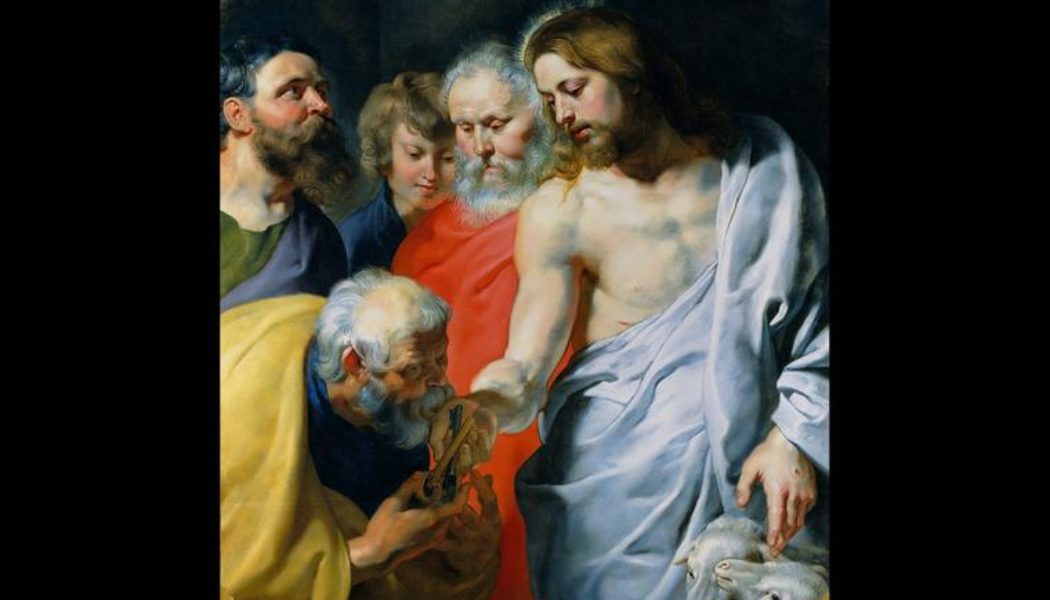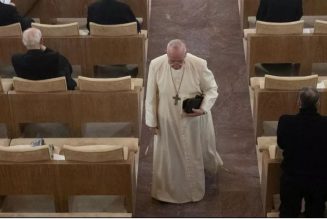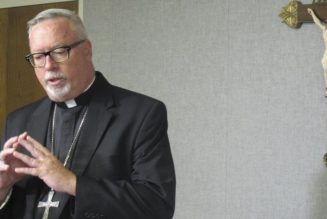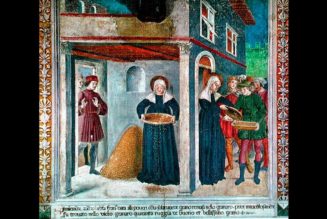
Like last week, the Gospel of the Third Sunday of Easter — Jesus with his Apostles on the shore of the Sea of Tiberias and Peter’s reconciliation — remains the same across the three years of the Lectionary’s readings’ cycle. That’s because it recounts “the third time that Jesus was revealed to his disciples after being raised from the dead.”
The Gospel features two events, joined in time and place: Jesus’ appearance in a Eucharistic context on the shore of the Sea of Galilee (called here the “Sea of Tiberias”) and Peter’s profession of love.
For the past two weeks, the focus has been on the Resurrected Christ’s appearances in and around Jerusalem. Remember, however, that Matthew (28:10, 16) and Mark (16:7) also report that the Apostles are instructed that Jesus would meet them in Galilee. Today’s Gospel reports an encounter in Galilee.
All human history changed with Christ’s Resurrection. One is impressed, nevertheless, how the Apostles combine their unique encounter with their Beloved Lord with the normalcy of life’s everyday demands. Yes, Jesus changed all of human history, but he does not barge into that history in an utterly disruptive fashion. In one sense, life has changed; in another, life goes on. How many people, after all, had the experience of dealing with a once-dead person? Now compare that unique experience with Peter’s and the others’ very quotidian conversation: “I am going fishing.” “We will also come with you.”
The spirit is willing but the flesh is weak – or at least very insistent and direct in its demands. The spirit might be willing to keep watch with Christ, but the eyes begin to close (Matthew 26:40-43). The spirit might be willing to wait for Christ, but the belly could use some tilapia (John 21:3).
They “got into the boat but that night they caught nothing.”
Where have we heard that before?
We heard it at the beginning of February, on the Fifth Sunday in Ordinary Time (Luke 5:1-11). Jesus had been teaching the crowds, which would not let him go, so he prevailed upon Simon to take him out on the water, from whence he taught the crowd. When he finished, he told Simon Peter to “lower your nets for a catch,” to which Simon Peter’s reply was, “we have worked hard all night and caught nothing.” Still, obedient to Jesus’ instruction, Simon Peter lowers his nets, only to come up with a catch so fulsome “the boats were in danger of sinking.” At that point, Simon Peter asks Jesus to leave him because “I am a sinful man.” Jesus does not, instead inviting him not to be afraid and set out on a new fishing expedition with him, one of “catching men.”
Once more, the Apostles — including Peter, James, and John, witnesses to the earlier event — are challenged to follow Christ’s initiative. And, once more, they catch more fish than they could have imagined. In the earlier episode, Luke noted their nets were tearing and, even with the help of another boat, both barques were in danger of sinking. In today’s Gospel, John notes the nets were “not torn” and they brought in 153 fish, which some scholars have suggested referred to all the fish identified by some learned men in antiquity, i.e., a universal catch. This time, Peter doesn’t ask Jesus to go away, and this time the breakfast on the shore has Eucharistic overtones.
Last time, Peter asked Jesus to go away because he was a sinful man. Today, Peter knows he is a sinful man … and that his sins include denying Jesus. It’s the elephant in the room.
Jesus addresses it by asking Jesus three times if he loves him. His threefold profession of love is intended to atone for his threefold denial. Jesus’ fidelity remains: Peter was the rock on which the Church was to be built, and that rock must be made firm, not cast aside. It will be made firm enough to withstand an upside down crucifixion, but that’s in the future. He had to “tend” and “feed” the sheep of that pasture. That is Christ’s mission for Peter … and every Peter since.
Rubens depicts today’s Gospel in his Baroque altarpiece, “Christ’s Charge to Peter,” which can be seen in the Wallace Collectionin London. The work, in oil which dates from around 1616, was in St. Gudule’s Church in Brussels until it was sold off in 1800 (ecclesiastical stripping of assets is nothing new) and then passed through various private hands.
Jesus and Peter, his vicar, are the central figures of the painting. Jesus’ centrality is obvious, both because he is Jesus and because he is the only full figured vertical figure in the painting. The three other disciples — the youthful St. John in the middle — are all at least partially obscured by Peter in front of them. Their gaze is also downwards at Peter, further centering our attention on him. Peter is also prominent, both by his kissing Jesus’ hand and his posture of submission and repentance, emphasized by the horizontal pose.
Jesus is clearly in post-Resurrection appearance, the wound to his Sacred Heart (wounded by Peter’s denials) prominent. Jesus’ left hand points to two sheep, who are clearly entrusted to this shepherd’s care and reinforcing the connnection to John 21.
What is not in John 21 are the gold and silver keys in Jesus’ right hand, symbols of the papacy (as can be seen on the Vatican flag). Jesus had earlier given Peter “the keys of the kingdom of heaven” (Matthew 16:14-19) while en route to Jerusalem, affirming the Petrine/papal primacy. While the Wallace Collection commentary says that Rubens’ “conflates” these events, only in a purely historical sense. As noted, Peter has been given the vicarship of Christ, and God does not take back his Word. It is not a question of Peter losing that dignity but of Peter living up to that dignity, which involves loving Christ in a responsible way, i.e., taking charge of the sheep. Jesus is the Good Shepherd, ready to give his life for the sheep (John 10:11). To be Christ’s Vicar is to be that Good Shepherd, equally ready to lay down his life for the sheep, a martyrdom Jesus foretells in today’s Gospel.
The Netherlandish Rubens has been called a voice of the Catholic Counter-Reformation in the Low Countries, then under the rule of Spain but roiling under Protestant influences. That Rubens would have wanted to emphasize the connection of Peter’s reconciliation with Christ with his continuing Petrine primacy was particularly apt in those times.
The Baroque features of the painting — powerful, muscular, “larger-than-life” figures, stark primary colors set against a darker background and light that illumines those figures — is all characteristic of the Flemish Baroque and especially of Rubens, its acknowledged master in that region.
Join Our Telegram Group : Salvation & Prosperity







